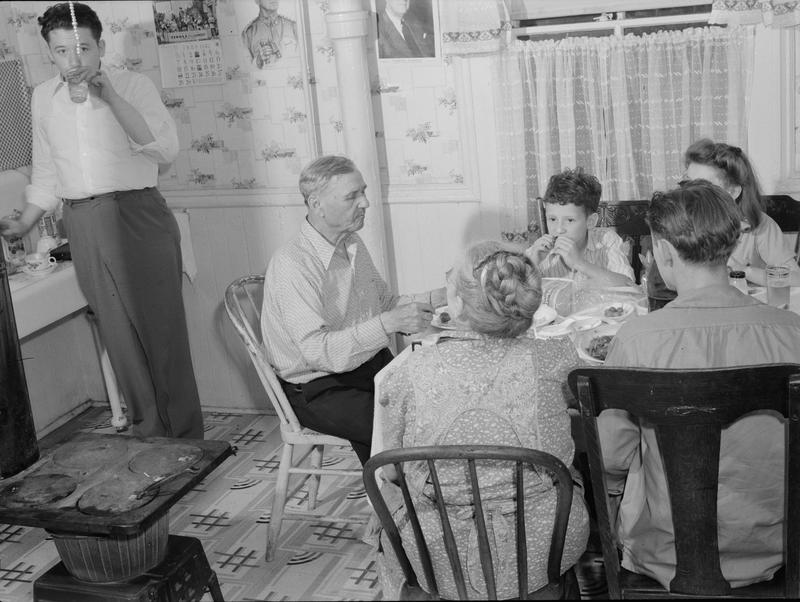 The NYPR Archive Collections
The NYPR Archive Collections
Episode 14 Slavs in the United States Part I

From the Office of Education study guide:
THE SLAVS: RUSSIANS, UKRAINIANS, YUGOSLAWS
The Slavs have a great heritage which reaches a thousand years into European history—Louis ADAMIC. THE Slavic people inhabit the lands which extend from the shores of the Adriatic Sea across Yugoslavia, Czechoslovakia, Poland, and Russia to the White Sea on the fringe of the Arctic Circle. They live under the flags of many nations and so have developed many differences of language, customs, and religion.
Early Russian Settlers.
Unlike other immigrants from Europe who settled along the Atlantic, the Russians first came to our Pacific Coast. In 1785, a group of Russian political exiles were brought to Alaska, then owned by Russia. Many escaped to California, which was then Mexican territory. There they founded a colony which lasted from 1812 to 1841. In 1867, the United States bought Alaska for $7,200,000 and the Russian settlers there became citizens of the United States. About this time, too, some Russian sailors deserted their ship and settled in Oregon and Washington. Why the Russians Came. Only a few Russians came during the first half of the nineteenth century. The most outstanding of these was Demetrius Augustine Gallitzin, who arrived in Maryland in 1792. He did missionary work in the Alleghanies and built the town of Loretto, Pennsylvania. After 1870, many newcomers began to arrive from Russia as the result of religious and political persecution.
The flow increased after the Revolution of 1905 and continued up to the outbreak of the World War. However, if the Jews are excluded, the total is much smaller than that which came from the other Slav countries. With the overthrow of the Russian government in 1917, those who came were educated people who had lost their wealth and lands and who objected to the new form of government. \
Russian Gifts.
Many Russians settled in our farm regions and brought with them hardy seed varieties of wheat, rye, and alfalfa, which are in common use today. Still, the great majority came to the steel mills of Indiana and Pennsylvania and to the mills and factories of our large cities in the East and Middle West. The Ukrainians. The Ukrainians are the people who live in that part of southwest Russia known as the Ukraine. Little is known about the few immigrants who came during the early period. The real immigration, as in the case of all the Slavs, did not begin until the 1870's. Eager to escape political and religious persecution at home, they were quick to come to this country in answer to the demand for workers.
What They Did.
Accustomed as the Slavs were to lower standards of living, employers used them to fight strikes in our mining and industrial areas. They worked in the coal mines of Pennsylvania. They attended the blast furnaces of Pittsburgh, Youngstown, and Gary. They worked in the automobile factories of Detroit. But they did not all settle in the large cities. The Ukraine is one of the great wheat-growing areas of the world. It is natural then that many of them settled in the farming states where they became farm and community leaders. The Ukrainians are an artistic people. They are lovers of song and of the arts. Their folk dancing is considered one of the most beautiful contributions to American life. THE YUGOSLAWS When They Came. Yugoslavia came into being at the close of the World War. At that time, the Croats, Slovenes. Serbs, Dalmatians, and other groups united to form one nation. While individuals from these different groups had visited the New World in the seventeenth century the first groups did not settle here until after the founding of Georgia by Oglethorpe in 1733. These were Croats and Slovenes who had first lived in Germany before they settled on the Savannah River in Georgia. Later they became the oyster fishermen of New Orleans. They also settled in California where they became fishermen and fruit growers. Toward the close of the nineteenth century, the Serbs, Slovenes, and Croats came in large numbers. They settled in almost every state in the Union, but chiefly in Illinois, Minnesota, California, Nebraska, Iowa, and Colorado. There they work in the mines, steel works, building industries, and on the farms. Gifts. Not only have the Yugoslavs prospered as a group, but they have given us such inventive geniuses as Nikola Tesla and Michael Pupin. These men made great contributions to the development of the long-distance telephone and the radio as we know it. The Yugoslavs have also done much for education, medical science, agriculture, literature, and music.
WNYC archives id: 125527